BGI-Research recently announced SpaSEG, a new unsupervised deep-learning framework designed to significantly improve spatially resolved transcriptomics (SRT) multi-task analysis. This powerful method reveals the precise distribution of gene expression across intact tissues.
Described in a paper published in Genome Biology, SpaSEG addresses significant computational challenges facing current spatial-omics platforms, including limited cross-platform compatibility, inability to adapt to varying spatial resolutions, and slow analysis of large-scale data. By rapidly and accurately identifying spatially coherent domains of gene expression, detecting spatially variable genes, integrating multiple tissue sections, and inferring cellular interactions, SpaSEG provides researchers with a versatile toolkit for understanding tissue architecture, developmental biology, and disease progression.
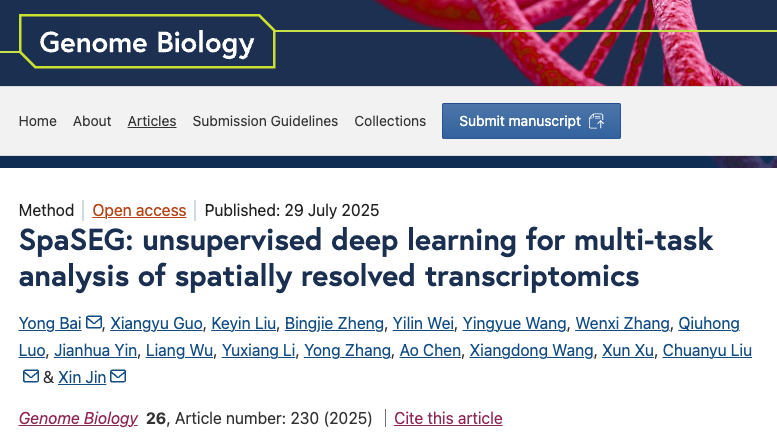 SpaSEG's publication in a top-tier journal demonstrates its potential to advance spatial transcriptomics research.
SpaSEG's publication in a top-tier journal demonstrates its potential to advance spatial transcriptomics research.
Spatially resolved transcriptomics has transformed the way scientists visualize gene expression in tissues, illuminating previously hidden patterns critical for comprehending diseases like cancer. However, analyzing the massive, multi-dimensional data generated by advanced spatial transcriptomics technologies remains a significant bottleneck. Current methods often fail to preserve the integrity of spatial domains, lose accuracy when integrating multiple tissue sections, or face limitations when processing large datasets from common spatial sequencing platforms.
To tackle these challenges, researchers at BGI developed SpaSEG. The core innovations of this study lie primarily in two aspects: methodologically, for the first time, the concept of image segmentation is introduced into SRT analysis, achieving end-to-end spatial domain recognition through a CNN architecture. Technically, unlike traditional methods, SpaSEG utilizes a novel two-stage training approach: the first phase initializes parameters using mean squared error loss, and the second phase iteratively optimizes clustering performance based on the dual-loss function design by combining cross-entropy loss with an edge-strength regularization term. This approach ensures accurate and biologically meaningful spatial domains with clearly defined boundaries, even on extremely large datasets containing hundreds of thousands of data points.
In benchmark tests, SpaSEG consistently outperformed existing state-of-the-art methods across multiple spatial transcriptomics platforms and resolutions. For example, when analyzing Stereo-seq data containing 84,724 spatial data points, SpaSEG completed the analysis approximately 26 times faster than SpaGCN, a widely used alternative. Even more remarkably, SpaSEG successfully processed a Stereo-seq dataset comprising over half a million spatial points (526,716 spots) with 2.5 times greater speed than Leiden clustering methods, while alternative approaches faced memory constraints or computational limitations.
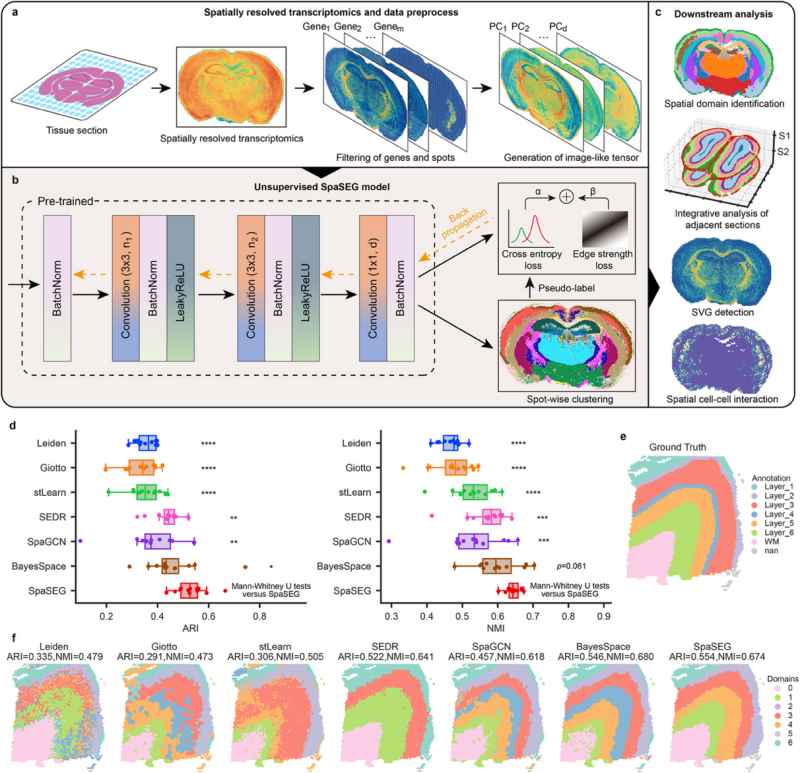 SpaSEG's neural network design enables comprehensive analysis of spatial gene expression data for multiple research applications.
SpaSEG's neural network design enables comprehensive analysis of spatial gene expression data for multiple research applications.
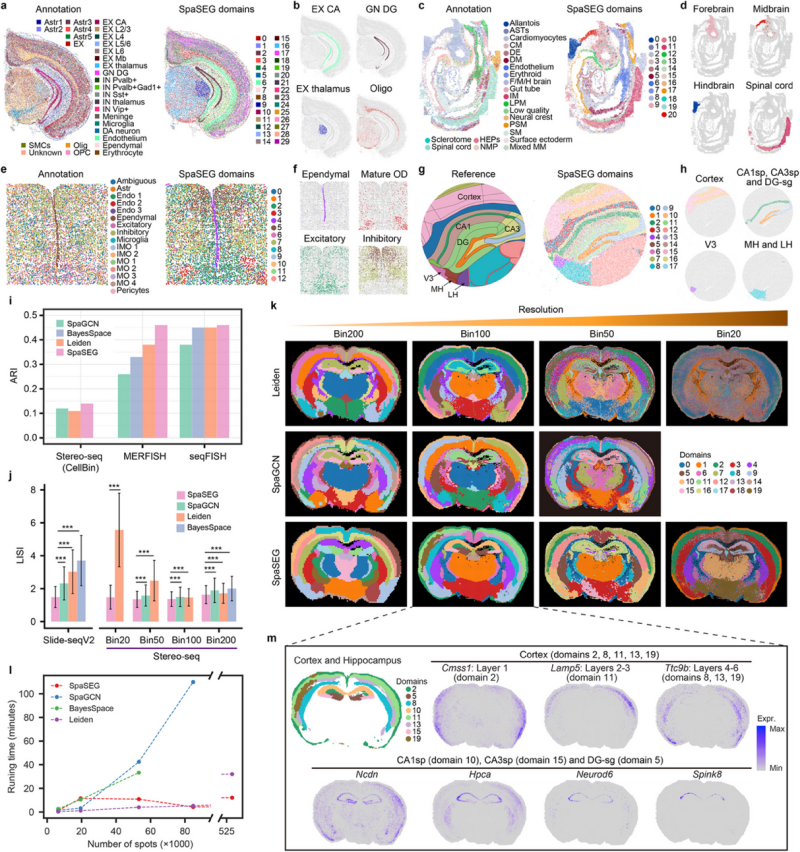 SpaSEG works across different spatial transcriptomics technologies, making it a versatile tool for diverse research needs.
SpaSEG works across different spatial transcriptomics technologies, making it a versatile tool for diverse research needs.
When applied to invasive ductal carcinoma (IDC) tissue samples, SpaSEG demonstrated significant potential for clinical insights. It robustly identified spatial domains that aligned with known histopathological features of tumor heterogeneity, distinguishing invasive tumor boundaries from normal tissues and areas of benign hyperplasia. Furthermore, SpaSEG detected spatially variable genes associated with cancer progression and immune regulation, providing insights into the molecular interactions within tumor microenvironments. Using an integrated ligand-receptor database, SpaSEG also enabled the inference of spatially resolved cell-cell interactions, correlating these interactions closely with downstream gene expression, thus reflecting biologically relevant intercellular signaling.
SpaSEG's ability to accurately align spatial domains across multiple adjacent tissue sections further opens the door to precise three-dimensional reconstruction of tissue architecture. For instance, when tested on mouse olfactory bulb Stereo-seq data, SpaSEG reliably aligned anatomical regions such as the granular cell layer (GCL) and subependymal zone (SEZ) without relying on additional complex alignment algorithms. Compared to existing methods, SpaSEG increased accuracy scores by 20-30% on standard clustering metrics, underscoring its robust computational advantage.
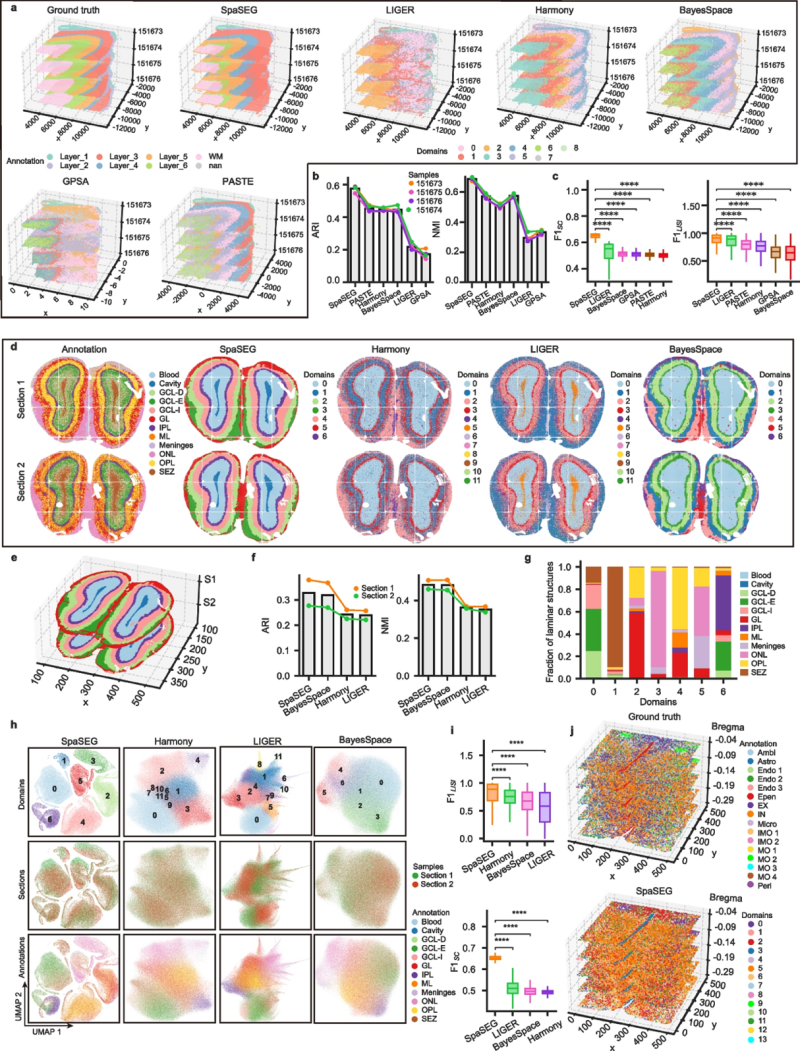 SpaSEG aligns tissue sections to create 3D tissue maps, enabling deeper understanding of organ structure.
SpaSEG aligns tissue sections to create 3D tissue maps, enabling deeper understanding of organ structure.
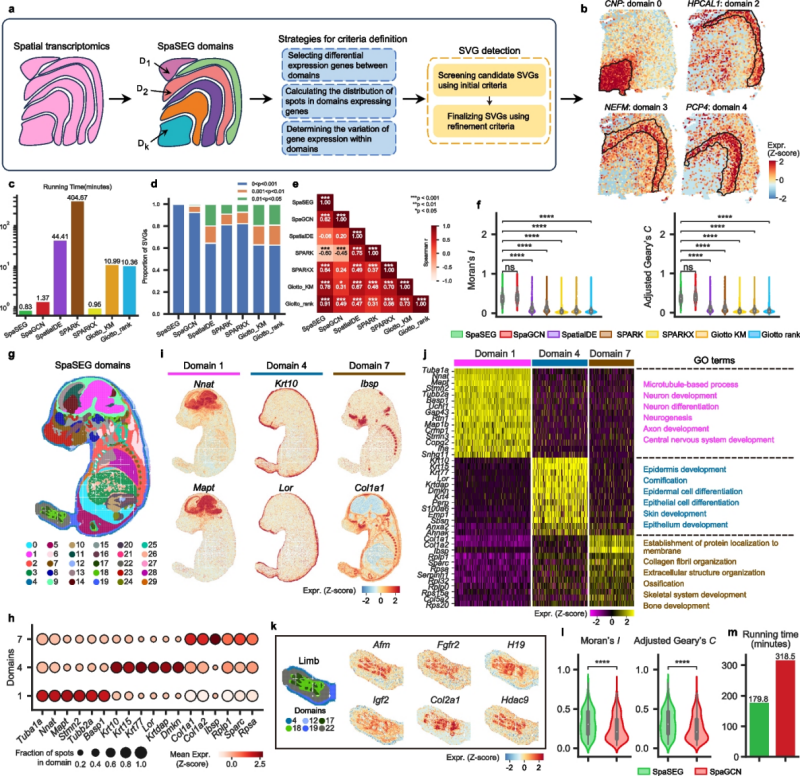 SpaSEG identifies genes active in specific tissue regions, revealing developmental patterns and potential disease markers.
SpaSEG identifies genes active in specific tissue regions, revealing developmental patterns and potential disease markers.
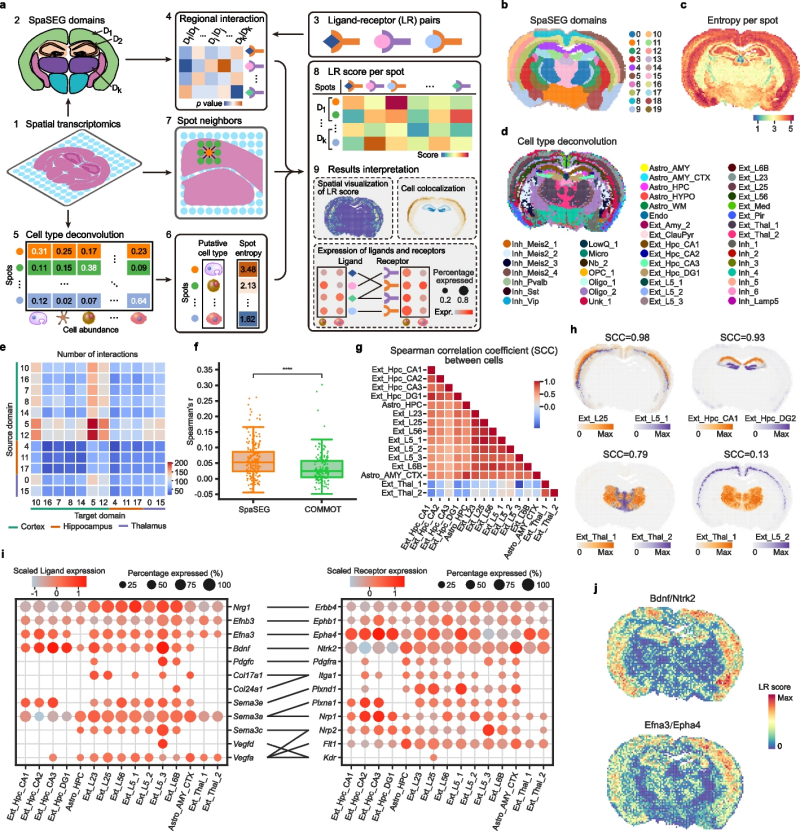 SpaSEG maps how cells communicate within tissues, providing insights into disease mechanisms and treatment targets.
SpaSEG maps how cells communicate within tissues, providing insights into disease mechanisms and treatment targets.
The research team emphasized that SpaSEG transforms previously fragmented gene-expression data into well-organized tissue atlases. The framework's straightforward design, precision, and broad compatibility with various spatial transcriptomics platforms position it as an ideal tool for conducting extensive, high-resolution biological studies. While the computational findings show great promise, the researchers noted that additional research and validation work will be crucial to establish whether SpaSEG-identified domains can effectively guide clinical decision-making.
As part of its commitment to open and collaborative research, BGI-Research has integrated SpaSEG into its publicly accessible spatial-omics analysis toolkit, Stereopy. The software is openly available online, complete with detailed documentation, enabling researchers worldwide to adopt SpaSEG in their workflows easily.
All datasets used in this research were derived from publicly available, previously published studies. This research has undergone ethical review and strictly adheres to relevant regulations and ethical guidelines.
The research paper can be accessed here: https://genomebiology.biomedcentral.com/articles/10.1186/s13059-025-03697-1
SpaSEG can be accessed here: https://stereopy.readthedocs.io/en/v1.6.0/Tutorials(Multi-sample)/SpaSEG.html



